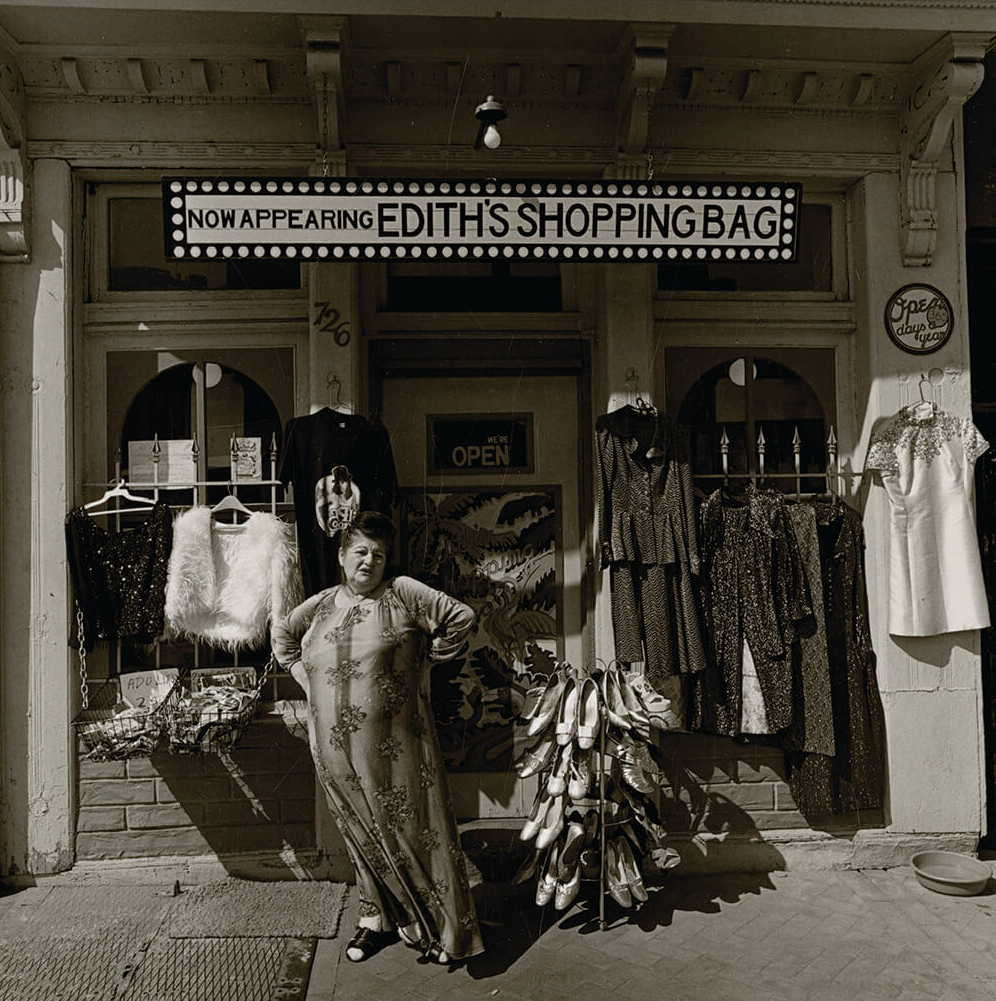But The Thames Café (“Thames and Dames”) got
sold and remade as Leadbetters Tavern, named after
the blues musician Lead Belly. A well-known Baltimore
figure named “Turkey” Joe Trabert opened
Turkey Joe’s a few doors from Bertha’s. A 1775-built
tavern called Al’s and Ann’s on Thames Street was
rechristened The Horse You Came In On in 1972, after
a long-haired, twentysomething named Howard Gerber
bought it with a down payment won at Pimlico.
Things were a bit looser in those days. The day that The Horse You Came In On opened, a friend of Gerber’s literally
rode a horse through the front door and up to the bar. Some believe
the saloon is not only the oldest continuously operating bar in the
U.S., but also the last stop of Edgar Allan Poe before he was found
delirious in the street on Election Day 1849. (One theory holds Poe’s
death resulted from a Mobtown practice known as “cooping,” in
which eligible voters were kidnapped, drugged, or forced to drink,
and then disguised to cast multiple ballots.)

In 1975, Irish-American Kenny Orye, who convinced some he
ran guns for the IRA, and Tony and Ana Marie Cushing opened the
Cat’s Eye Pub on Thames Street, taking their name from a West Virginia
distillery where Orye’s uncle bought his moonshine. Contrary to what’s been published elsewhere,
Ana Marie Cushing says with a smile,
the previous Harbor View tavern
there had not been a biker hangout,
but a lesbian bar. By the late 1970s
and early ’80s, the Cat’s Eye’s back
room had become a place to be after
closing time, recalled Steve Bunker,
a former seaman who operated the
nearby China Sea Trading Company with a parrot perched on his
shoulder. “At 3 a.m. you could run into politicos, hookers, sailors,
deal-makers, illegal Irishmen, riffraff, and refugees,” Bunker, who
now lives in Maine, wrote years later in the Fells Point newsletter.
“You didn’t ask too many questions about your stool mates, you just
drank your beer, passed a joint, and enjoyed the company.”
Before Orye died from an overdose at 33 in 1987, he organized
an Irish wake at the Cat’s Eye for a departed IRA leader. It was equal
parts publicity stunt to raise awareness for the IRA cause and joke
on city officials and the press: The body in the casket wasn’t real.
Five years after Orye’s death, longtime Cat’s Eye bartender Jeff
Knapp, who normally resembled Abe Lincoln and once snuck into
the St. Patrick’s Day parade dressed as the patron saint of Ireland,
was honored with a New Orleans-style jazz parade for his funeral.
Ghost tours of Fells Point claim the ghosts of Orye and Knapp
still work the Cat’s Eye bar.
The music and bar crawl culture developed over time as more
pubs opened kitchens and got permits for live music. But things
were not excactly popping in the early ’7os. “When [Bertha’s] first opened, someone would say, ‘Let’s go over to The Horse
or the Cat’s Eye for a beer’—there was this sense we
were all in it together—and you’d get into your car and
drive around the corner and have no trouble parking
right in front,” the now-84-year-old Tony Norris says.
“It was that empty down here.”

Dreamlander
Edith Massey in
front of her store, Edith’s
Shopping Bag.—EAST BALTIMORE DOCUMENTARY PHOTOGRAPHY PROJECT COLLECTION. SPECIAL COLLECTIONS, UNIVERSITY OF MARYLAND, BALTIMORE COUNTY.
The Fells Point art scene had begun blossoming
earlier. By the late ’60s, the old Hollywood Bakery on
Broadway had turned into a full-blown artist colony of
former Maryland Institute College of Art students. Divided
into 22 rooms and studios, the entire place rented
for $100 a month, giant bakery ovens included. Others
began squatting in and renting previously condemned
houses from the city while the “Stop the Road” fight
continued in the courts. By 1973, at least 15 houses that
the city had bought out earlier were rented to people
who wanted to live in and repair them. A $7,500 home
went for $75 a month with the generous provision that
repair materials could be deducted from the rent—the nascent start of a now-50-year rehabbing movement.
The Fells Point Gallery, founded in 1969 by MICA alumni, became a
destination. Then, a second-hand bookstore opened. Many still looked
down upon “seedy” Fells Point at the time, but others saw it as Baltimore’s
version of Greenwich Village. The Fells Point Corner Theatre,
now in Upper Fells, raised its first curtain, appropriately, at the corner
of Shakespeare and Broadway in 1970. The still-thriving Vagabond
Players moved into the former Corral’s Bar on Broadway in 1974.
In the late ’60s, John Waters, Glenn Milstead, aka Divine, and
friends began making pilgrimages to Fells Point, finding new partners
in subversion. MICA graduate Vincent Peraino, who was among
the influx of artists, became Waters’ set designer. Susan Lowe, a
painter who later dated Orye (some of her paintings still hang in the
Cat’s Eye), appeared in nearly every Waters film. Other Fells Point
Dreamlanders included Mink Stole, George Figgs, Paul Swift, Peter
Koper, and Bob Adams. “The Hollywood Bakery, that was Vincent’s
commune, and it was right next door to Pete’s Hotel, where Edith
Massey worked as a bartender and we hung out,” Waters recalls with
a laugh. “It was the worst possible time down there and it was the
cheapest possible place. Drinks were 30 cents. Divine hated it. He
called it a ‘hobo bar.’”
Waters shot all over Fells Point and Massey opened a thrift store,
Edith’s Shopping Bag, with Adams following her memorable appearance
as “the Egg Lady” in Waters’ 1972 movie hit,
Pink Flamingos.

“Fells Point was welcoming to all kinds of people,
that was the thing that was so amazing,” Waters continues,
noting he once did a fashion shoot at the Apex
adult movie theater on Broadway, which somehow coexisted
among the churches and families in Upper
Fells. “Paul Swift would jump up and dance naked
on the bars. They weren’t gay bars. It was gay and
straight. It was trans. Trans even then, and everybody
really got along. It was just cultural outlaws that didn’t
fit in their own minority.”
“The artists would hang around with the tugboat
guys and stevedores in the bar—we used to open at 8
a.m. for guys getting off their night shifts—that’s just
how it was then,” says Cushing.
